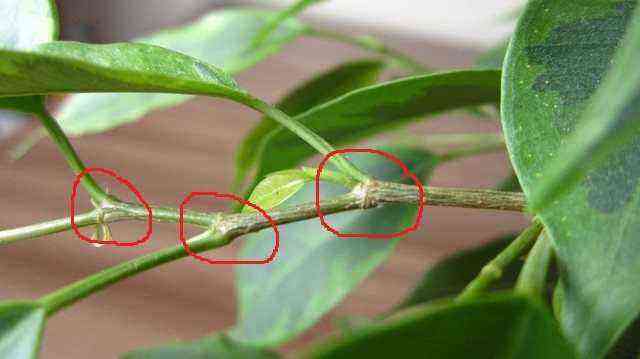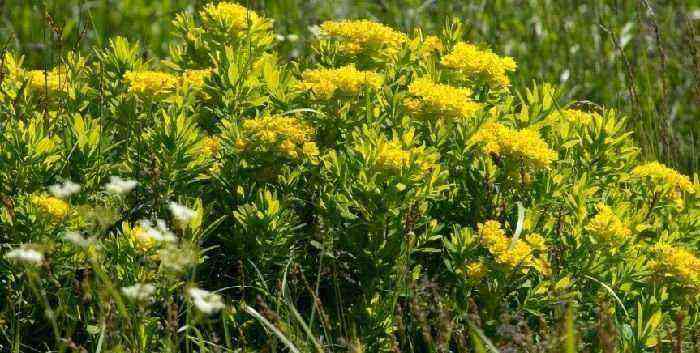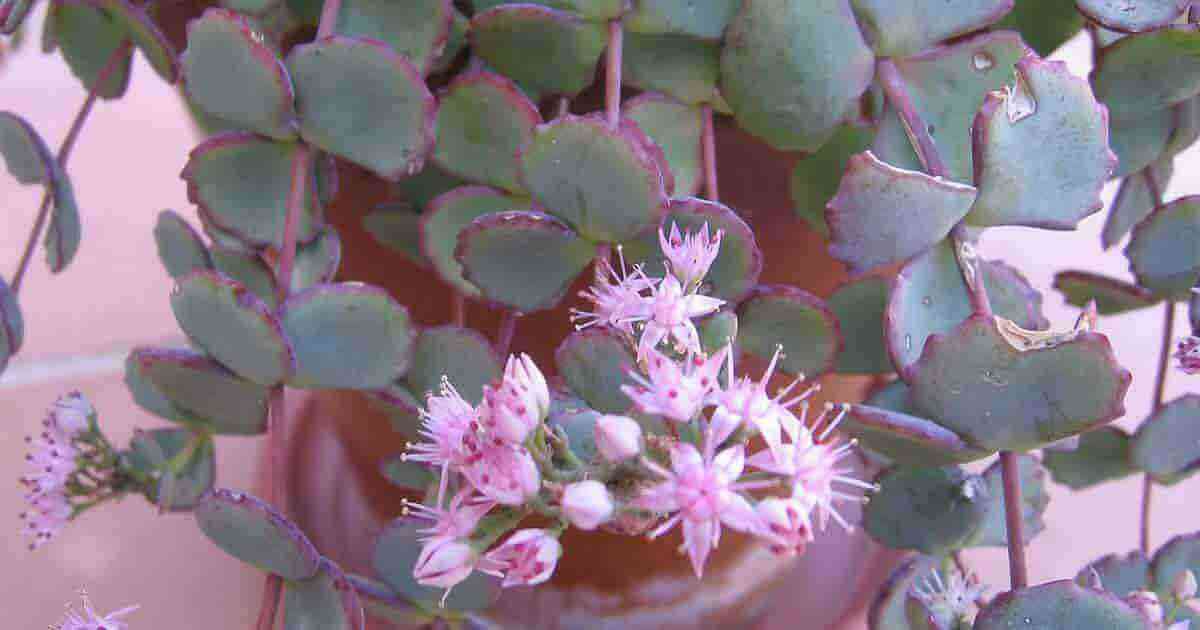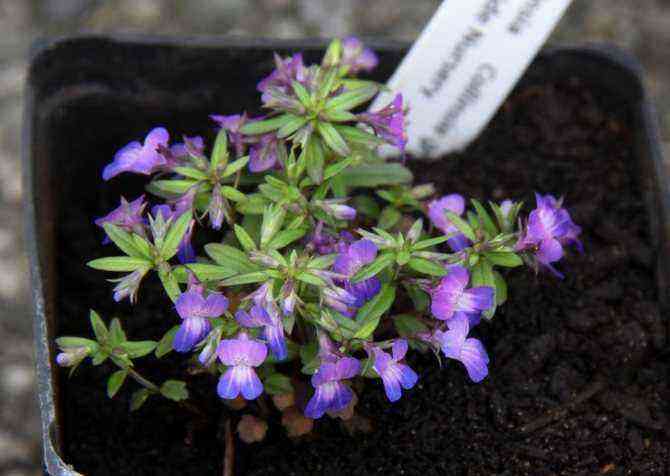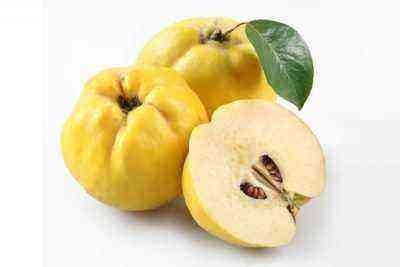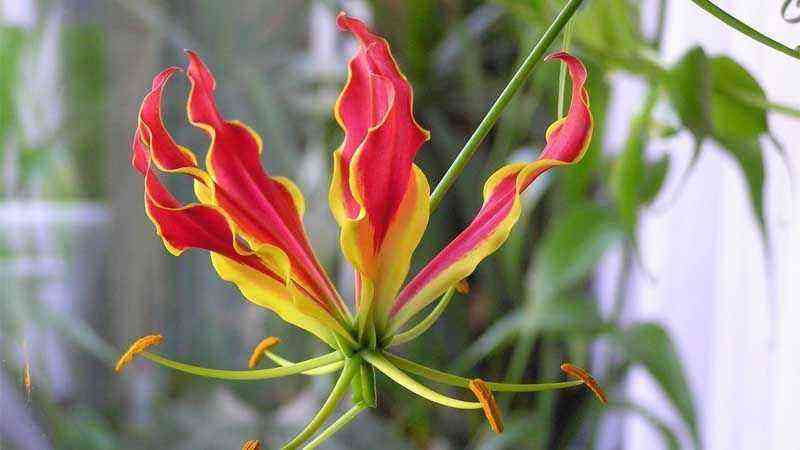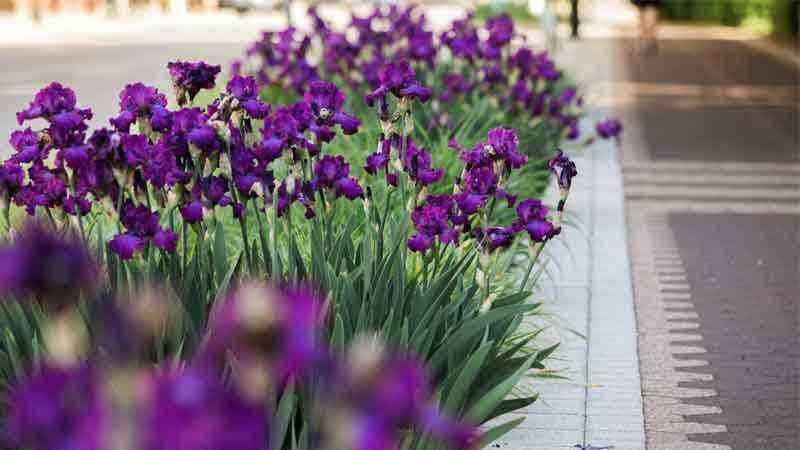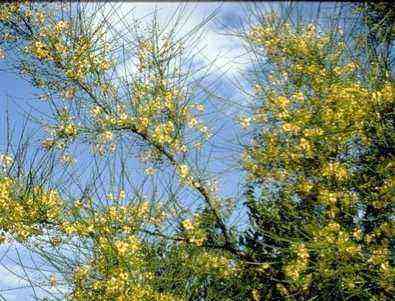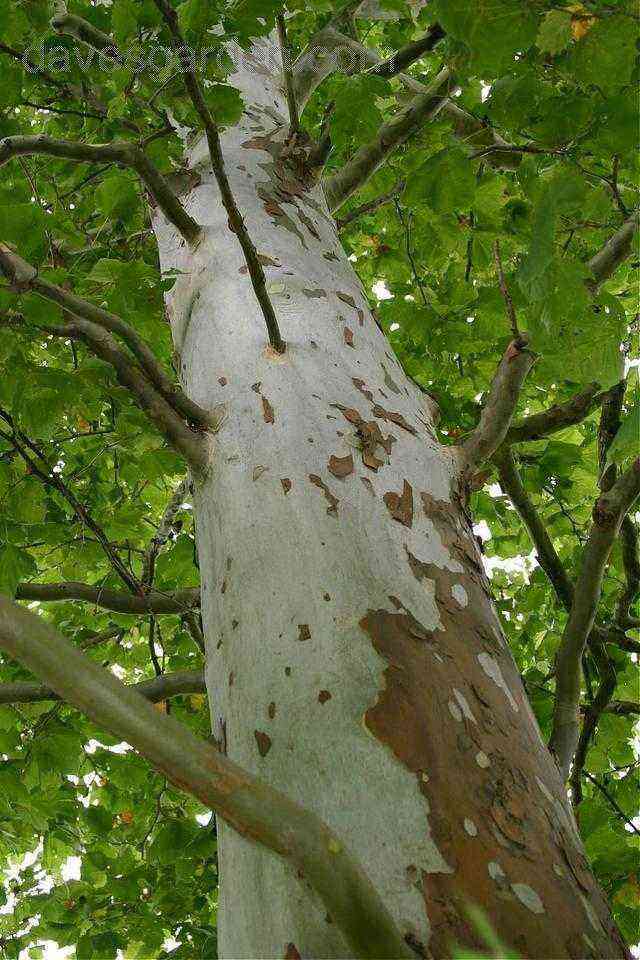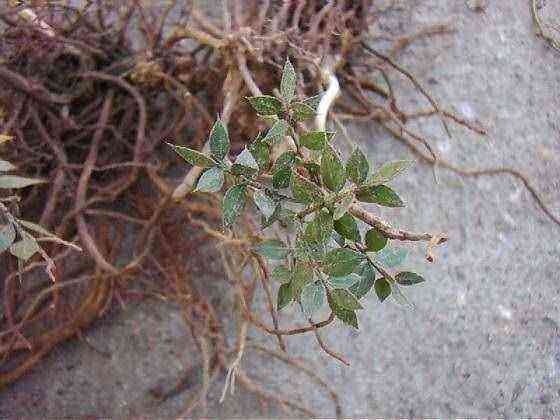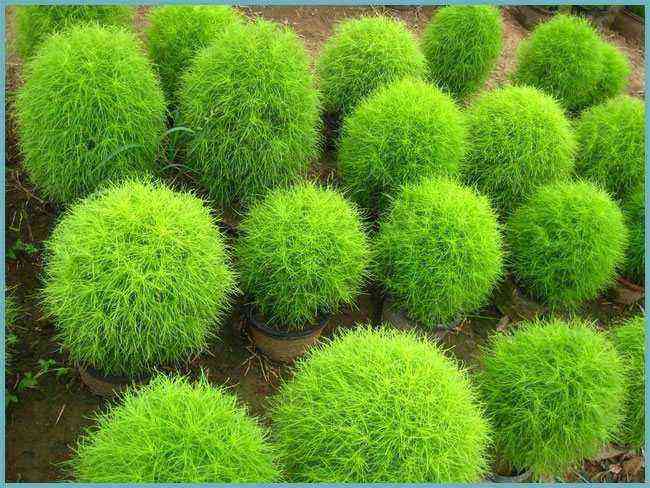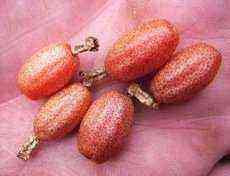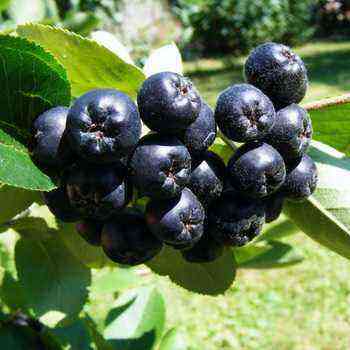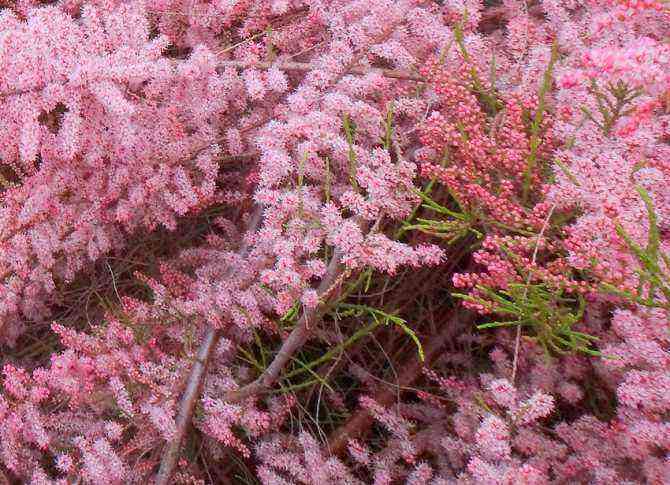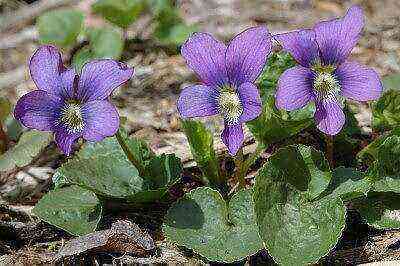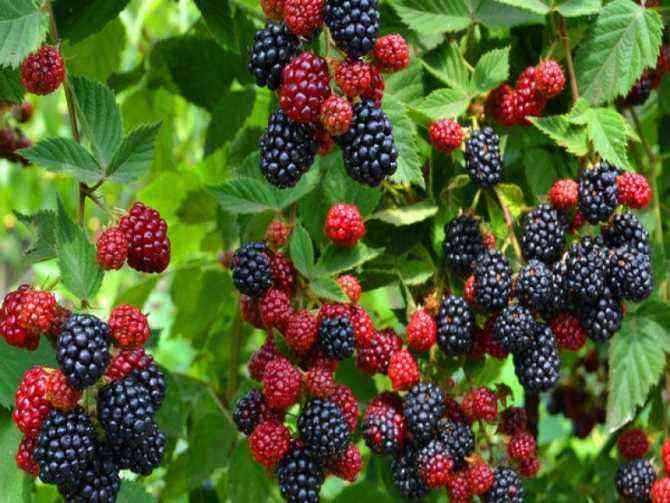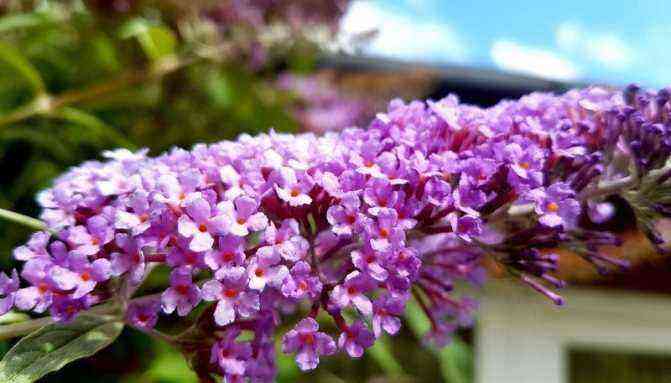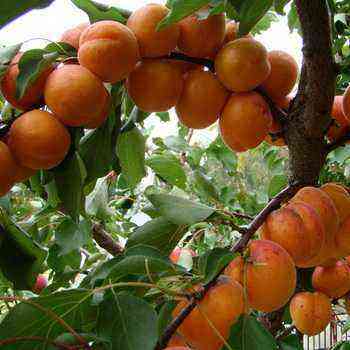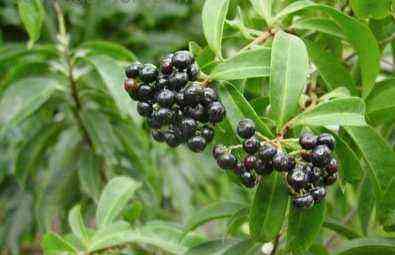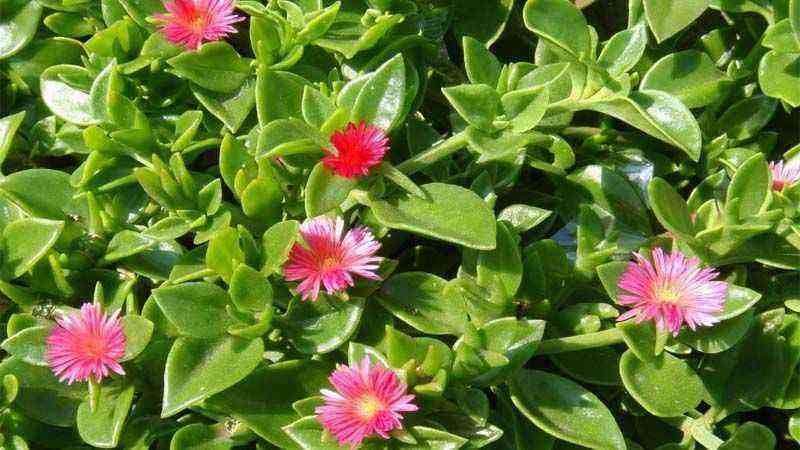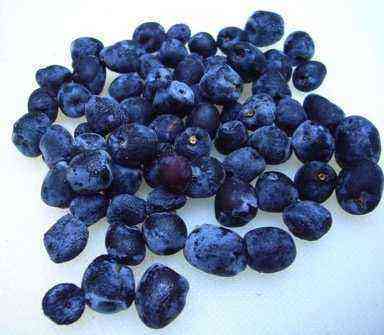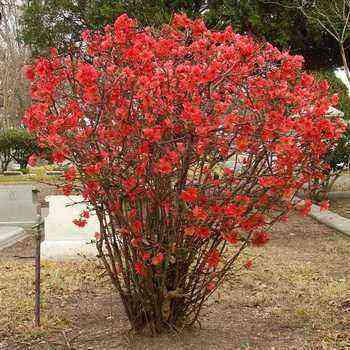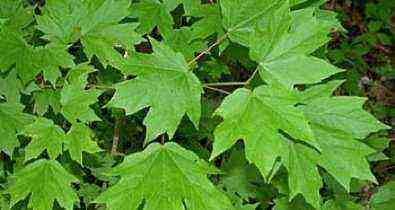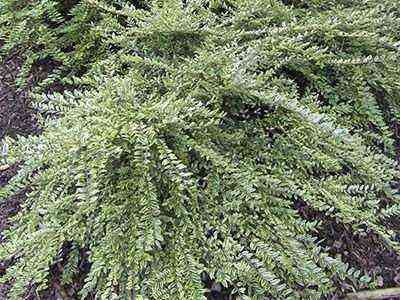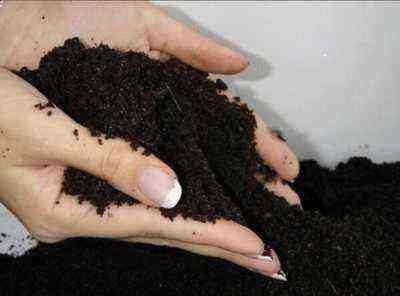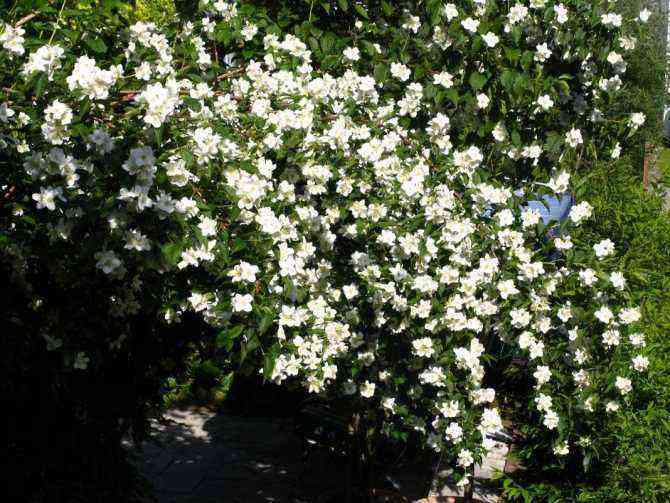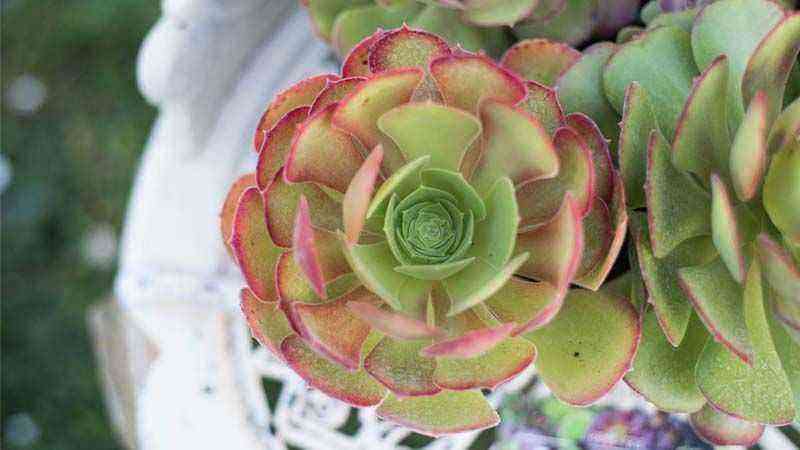Pruning potted vegetation is one aspect of maintaining them. But this procedure is also very individual. Some flowers should not be touched at all, while others need to be cut regularly. Cutting different parts of the vegetation has its own goals: removing yellowed leaves, dried shoots, creating a certain shape for the plant, promoting bushiness, or profuse flowering, or simply for rejuvenation purposes. Pruning is an essential part of the life of most flowers. This action is simple, but you should remember about the approach to each individual type of vegetation and the general rules.
Pruning indoor plants
A little about myths.
First and, probably, the most important myth: you cannot cut off, as the flower will “hurt” (or badly). It is very difficult to refute this opinion, since people by their nature tend to humanize the world around them. But as you know, plants do not have a nervous system (like humans), and no serious research has shown that plants are capable of feeling something. Therefore, they cannot “love”, “prefer”, etc. And besides, very often plants acquire not a beautiful shape from improper care. Therefore, if you have a lopsided or elongated plant that, in your opinion, “loves” how you care for it, then maybe you should read again about the recommended care methods? Second myth – if you cut off the growth point, then after that the plant will die. In fact, there are very few such plants. Now I can only remember the Arekov family. All other plants (dracaena, yucca, euphorbia, ficus, etc., including orchids) can be cut off, as you personally want. The third myth – if you cut the plant, it will hurt. Anything that makes the crown not beautiful can be cut off from almost any plant. It will not die from this and will not get sick. Naturally, subject to the necessary care. And about when and what to cut, I will write below.
Making a cut of green pets correctly
Before proceeding with this procedure, it is necessary to study the preferences of each flower separately, and then proceed based on their preferences. Some species can die even from a simple shortening of the stem. Other specimens respond very well even to very frequent clipping. In addition to viewing information on potted crops, it is also necessary to inspect the flowers themselves, for damage, dead shoots, whether growth and development are going well. All this will help determine what degree of pruning is required and to what extent.
It is necessary to study the preferences of each flower separately.
Systematic circumcision will help simplify all care activities. Care must be taken to avoid the need for slices. It is necessary to constantly maintain regularly decorativeness and ideal shape, to prevent overgrowth or, conversely, to completely discard the foliage. All timely procedures can get rid of difficult pinching. Removal for sanitary purposes is carried out every year, during the period of active growth, and then as necessary, in order to maintain the vegetation in proper condition. There is no need to carry out a rejuvenating haircut separately; this procedure is carried out in conjunction with other cleanings in an emergency or systematically.
In order to correctly perform the removal steps, you need to follow some rules that can be correlated with the norms for garden vegetation. The general and main task is to take all the necessary measures to maintain the health of flowers.
The main norms for cutting pot crops:
- The instruments with which you carry out the procedures must be well sharpened. No need to expose green pets to additional stress;
- Hygiene is important when caring for pets: clean hands, tools and surfaces. Disinfection of the tool is required before proceeding with the removal of parts of the plant. In addition, you should be most careful when working with very sensitive flowers and with indoor poisonous specimens. Protect the skin of the hands, as well as the surface and protect the plants themselves;
- Plan for separate pruning and transplanting activities, although it is recommended for a large number of vegetation varieties to do these activities together. But this is not worth doing, because the flower must adapt after the transplant in order to be ready for cutting. In fact, this is a lot of stress for all vegetation, it is harmful, so leave time for rest. There is no sense for risk, because otherwise you will destroy the plant, and such sacrifices are not needed at all;
- Slicing should be done correctly, it is done at an angle, above the level of the kidneys, remember this rule. If you decide to completely remove the stem, then this is done at the base, at ground level or at the point of branching. A partial cut should be made 3-7 mm above the kidney. Carry out a careful examination of the kidney, they will tell you how to correctly orient the growth of green pets – up or to the sides. There is also a rule that potted vegetation is cut in such a way that new stems will begin to grow outward, and not inside the bush, which means that the cut must be made from the bud;
- There is no definite time interval when it is necessary to cut a plant, for this you need to take into account many different factors, but the most important is the individual needs of an individual specimen. In general, this procedure is carried out in the spring, or in the active stage of growth, since the upcoming summer period will give strength after dramatic changes. But this rule works, again, taking into account the age of the flower and the stage of its development.
- During a haircut, stop periodically and look at the result from the side. This activity is fun and can be overdone. Therefore, if you want to form the crown of a flower, distract yourself, step back, evaluate where you need to cut and start working further, but intermittently.
How to properly prune a houseplant. Some terms.
Growth point – the tip of the shoot. This is where the new leaves grow from. Node – the place of escape, to which the sheet is attached (or was attached earlier, if the sheet is no longer there). New branches can grow from the nodes.
Nodes
Interstitial – the section of the escape between the nodes. No further growth is possible at this location. Prishchip – removal of the bud at the end of the shoot, i.e. the point of growth.
When to prune phlox for the winter
farmer-online.com
Phloxes are pruned in the fall for several reasons. This procedure helps protect plants from diseases and pests, and allows you to give the flower bed a neat look. By the spring, the plant will accumulate more nutrients and release new strong shoots.
Choose the time for pruning in the last days of September – early October, when phloxes will finally bloom. Before the onset of cold weather, pruning should be completed.
You can trim phloxes in two ways: flush with the ground or leaving 5-10 cm above soil level. The first option will protect plants from pests and pathogenic bacteria. The second one will hold back the snow and thereby warm the plant.
Do not break off the phlox shoots with your hands, just cut them off, otherwise you can damage the vegetative buds of renewal.
Spud the phlox rhizome with compost or humus. If there is little snow in winter, you can cover the bush with loose earth (1 bucket per bush) and cover it with spruce branches.
Sprinkle wood ash around the bushes to protect the plant from pests while feeding the phlox.
How to properly prune a houseplant. General rules.
The most optimal time for pruning is the beginning of the growth period, that is, the last days of February or the whole of March. Of course, you can trim at other times. But in summer, the plant can bloom. Autumn is preparation for the rest period. A pruned plant can only awaken buds in the spring. Accordingly, there is a risk that the flower will stand in the form of a “hemp” for about six months. But in general, in the fall, you can also cut it. In winter, the plant must rest. Pruning in some cases encourages growth. Accordingly, natural rhythms are disrupted.
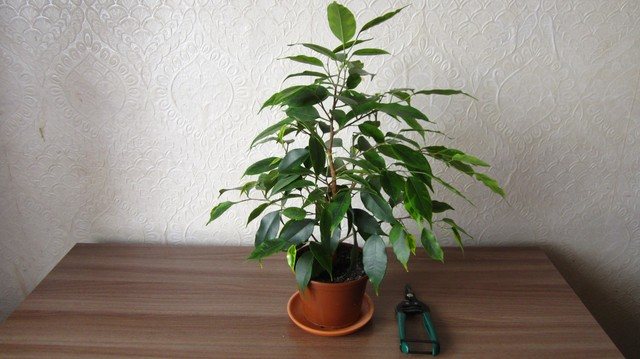
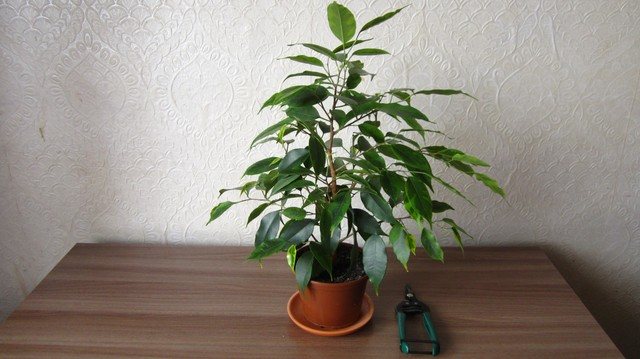
There are plants that, after pruning, easily form scruffy bushes. First of all, these are trees with a rosette form of growth, for example, Schiffler, Dieffenbachia and the like. Although experienced florists are quite successful in pruning them, most often such plants are recommended to be periodically updated. That is, cut off the cuttings, root them, and grow new young plants. An old overgrown bush with this method is thrown away. A very short crop can be an alternative. In this case, you need to cut off almost the entire aerial part of the flower, leaving a stump 3-5 cm in height. Then 1 or 2 new shoots grow from it. As a result, the plant will look young.
Features of further care
With the planned cleaning of dead leaves and peduncles, the spathiphyllum does not require any special care, the plant continues to live as usual.
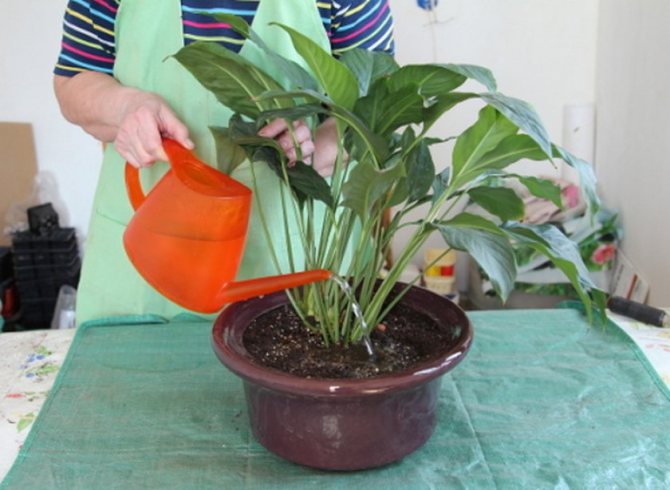
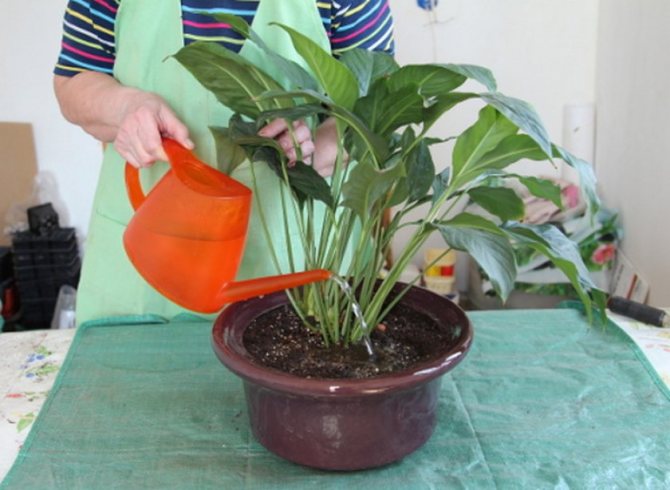
If the sheet plate is partially cut:
- Places of cuts are powdered with crushed coal.
- An antibiotic, stimulant or phytohormone (Epin, Zircon) is added to the spray water.
When the aboveground part turns yellow, care errors are eliminated:
- Add a dose of watering (slightly, gradually).
- Additionally humidify the air (wet trays with pebbles, spraying, shower).
- The pots are installed away from the direct sun, they shade the windows.
- After flowering, fertilizing is added to support immunity.
Blackening instruction:
- Place the pots in a warm place.
- Reduce watering, water when the top layer of the earth dries out.
- In case of fungal diseases after transplantation, continue treatment with fungicides (Fitoverm, Karbofos) by spraying the entire aerial part.
In conclusion, we emphasize that Spathiphyllum needs special emergency pruning and treatment only in case of infection with fungal and viral infections. Removing old dried leaves and peduncles is a hygienic and preventive measure for renewal, good growth and abundant flowering.
What branches can be cut off.
Pruning is done to ensure that the crown is beautiful in the future. Very often, flower growers cut it so that it is beautiful “here and now”. At the same time, they do not pay attention to where the kidneys are directed. This approach leads to the fact that after a month the plant loses its decorative qualities. Therefore, before trimming, decide what exactly you want to get in the end. It is quite possible that it will be enough for you to thin out the bush a little or cut off an overgrown shoot. Notice the branches that grow parallel to each other. Almost always, this makes the crown not beautiful. Depending on the situation, one of these branches can be cut off to the base, or cut off near the bud, which “looks” in the other direction. It is natural to decide what you need to do. In addition, branches that grow inside the crown or are directed away from the growth of most other shoots (up or down) make the bush unattractive. They also need to either be cut off altogether, or cut to the bud, directed in the right direction. That is, in accordance with your personal understanding of future development and aesthetic taste.
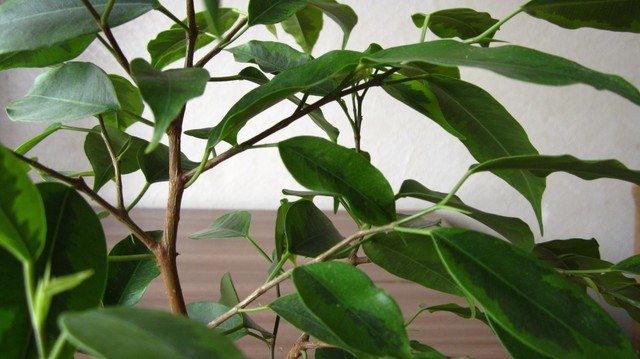
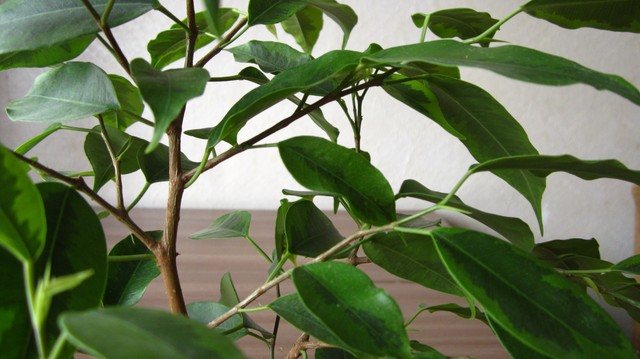
Parallel shoots


The shoot grows upward, thereby making the bush look sloppy.
Pruning that forms the crown of indoor flowers
Formation is used to beautify all perennial varieties of bushes, trees, which, with the help of this manipulation, are given a compact, austere or refined look. If you need density or maintain the desired size, sticking to the shape is the goal, the direction of which you choose based on personal preference.
Formative pruning performs several tasks at once:
- activation for the growth of young and extreme stems;
- stimulation of abundant flowering;
- adjustment of height and shape, removal of unnecessarily long, unproductive branches and few leaves;
- giving a certain shape to the crown, maintaining decorativeness and attractiveness;
- independent giving the deciduous mass a strict form: a ball, a square, a pyramid and others;
- correction of large potted flowers;
- adhering to one specific silhouette;
- giving the vegetation density and splendor.
All these maintenance measures are aimed at maintaining the health of potted crops and giving them an individual style that suits the taste of the owners and their interior.
Care measures are aimed at maintaining the health of potted crops
It is optimal to carry out formative cutting with the arrival of spring, when the first signs of vegetation appear, or after it has passed, when the stage of complete dormancy begins. For crops with a flowering period, this method is carried out after flowering. Removing all obsolete peduncles, yellowed and dried parts of flowers, thereby creating the necessary volume, size and silhouette, activating the growth of stems, which will give a lush color in the next season. But you need to take the natural needs of plants as a basis:
- if flowering occurs on young stems, then pruning should be done at the beginning of the growing season;
- if the vegetation blooms on the branches of the last season, the formation is not carried out, the peduncles are cut to the first leaves;
- pronounced flowers need to be regularly rejuvenated by cutting after flowering.
Formation of a bushy crown in Benjamin’s ficus. Personal experience.
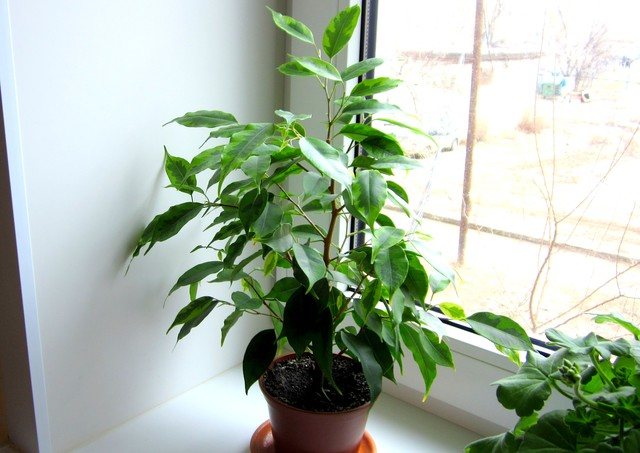
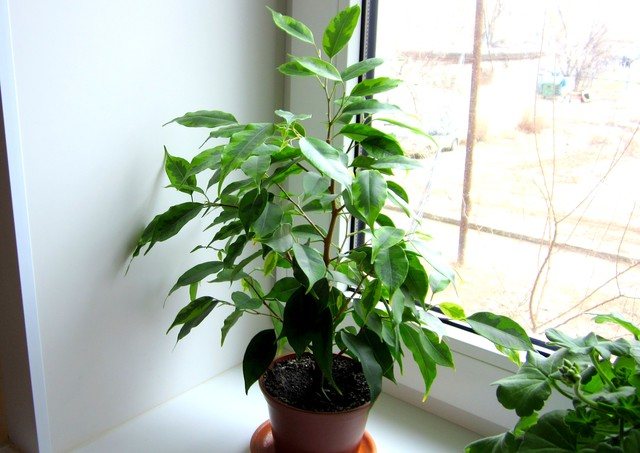
If you have read my previous articles, then you will probably recognize my ficus) His crown has grown in one plane. There are branches, the direction of growth of which makes the bush ugly. In addition, it was originally planned (if you remember) that the plant will be a compact tree. Ficus Benjamin is a wonderful, unpretentious plant on which you can practice pruning. Even if you cut off the branch, and later see that it was a wrong decision, you can always fix it.
How to keep fresh cut flowers in a vase longer
The main recommendations for prolonging the freshness of a bouquet relate to the initial steps, starting with unpacking the bouquet. Carefully study the composition of a particular flower arrangement and follow simple but effective life hacks that will help keep the flowers in the vase for as long as possible.
- Regardless of the type of plant, it is important to remove excess leaves from the stems, and roses and other thorny flowers also have thorns. An excess of leaves leads to rapid decay, so it is important to cut off any excess.
- Hard stems (roses, chrysanthemums) must be cut with an oblique cut: this method increases the area for absorbing moisture from the vase.
- In order for the flowers to stand in the vase for as long as possible, to retain their fresh appearance and aroma, they need to be fed with special additives.
- These feeds are sold in flower shops and are designed specifically for home use. Bouquets in vases are usually fed with minerals. They give the greenery more saturation, and the colors of the buds become noticeably brighter.
- Flower food allows you to keep the water in the vase clean for a long time, and the life of the bouquet increases 2-3 times!
- A fresh bouquet takes time to get used to room conditions.
- Do not rush to remove the packaging from the flowers, gradually prepare the plants for the microclimate of the room.
- Bouquets purchased in the cold season should first be brought to the glazed balcony, and after 20-30 minutes transferred to the room.
- Flowers do not like dry air and direct sunlight: do not put the bouquet near appliances that emit heat, near the batteries and on the windowsill.
- Purchased flowers do not like ordinary water, so immediately add floristic minerals to the vase, but pre-soak the bouquet without a wrapper in a basin or bath with room temperature water to nourish not only the roots, but also the buds themselves.
- Only cut fresh flowers with a knife or a special plant pruner. It is very important not to damage the stem – this will accelerate the decay.
- Change the water in the vase daily or every 1 days. Refresh the cut of the stem by 2-1 cm every day: it is very important that the channel for absorbing moisture is not covered with a protective film.
- Renew the cut by keeping the stems submerged to keep air bubbles out of the moisture absorption channels.
- Use melt water to preserve the flowers in the vase: freezing kills germs. To do this, freeze several bottles of water and place them in the freezer. Add fertilizing to the thawed water and only then immerse the plants in it.
Pruning.
First, I will prune branches whose growth direction is contrary to the general rules. I don’t want to cut them out completely, only half them. After all, I plan that the bush will be more or less voluminous, and not like now in the same plane. Since I do not want the plant to grow excessively upward, I will cut off the top of the head. In addition, there are parallel branches. Thus, I will get rid of this shortcoming as well. Now we will examine the bush from all sides and determine what else will interfere with the formation of a beautiful bush. After that I will prune the branches, which in my opinion have extra growth. Here’s what happened in the end.
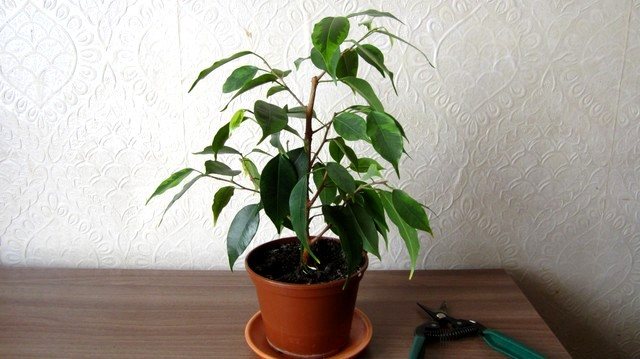
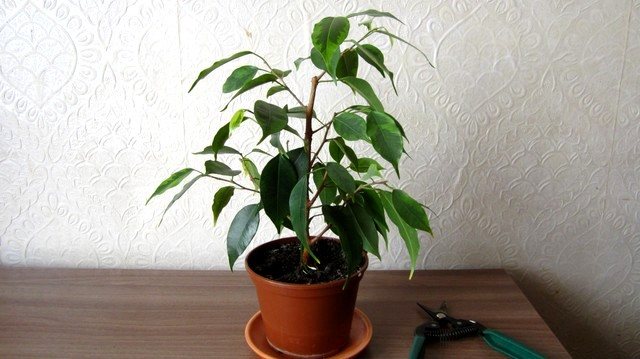
When can a part of a plant be removed and when not?
- When flowering once a year, in the fall, decorative fruits are formed in the rose, in this case the flowers of the plant are not removed.
- In summer, shoot growth is undesirable. It is stimulated by pruning withered flowers. Therefore, the procedure does not need to be carried out at this time of the year.
- It is necessary to remove the wild growth growing at the base of the rose. If you do not carry out the pruning procedure, this can lead to the death of the plant.
- Prune branches and remove leaves in the fall. This will help the plant not to become infected with fungal diseases.
Cropping result.
My ficus has sprouted many new shoots and has grown enough foliage. Pruning and subsequent correction of the crown with the help of pinching allowed us to get a voluminous, compact and beautiful plant as a result. That is, all the tasks that stood before me were solved. Now you need to periodically adjust the crown with pinching and (possibly) pruning. Similarly, you can form the crown of any other plant. After all, they all develop in a similar way.
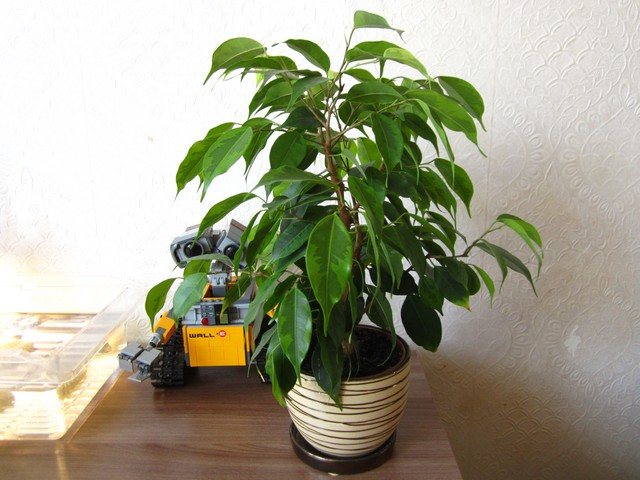
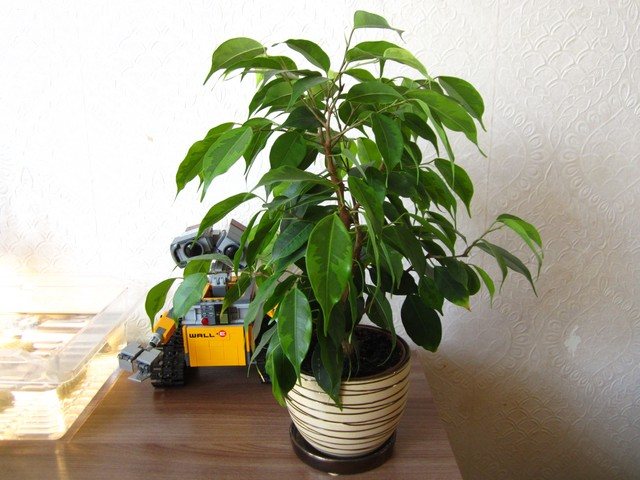
Good luck to you and your plants!
Subscribe to our Telegram channel
Pinching (pinching)
Restraining types of pruning are the simplest. Both pinching (the term synonymous with pinching is also popular) and shortening are measures that are carried out during the entire stage of active growth in order to prevent excessive elongation of branches, stimulate the growth of lateral branches or improve the quality of flowering. In fact, all these terms are synonymous and we are talking about a very simple procedure – removing the top of the shoot or extra buds. These are mini pruning, the easiest plant formation and containment measures.
Pinching, or pinching, involves the removal of the upper growth point, the upper pair of leaves or the upper segment of the stems of cacti and succulents. So, the separation after flowering of 1-2 segments of each stem of Schlumberger allows you to achieve more abundant flowering in the next season, and pinching the tops of young plants – to get thicker bushes. The buds are plucked mainly from large-flowered indoor plants. Excess buds, formed in large quantities, degrade the quality of individual flowers, therefore, timely removal of the ovaries allows you to achieve the most spectacular show.
Pinching has several tasks:
- By removing the apical growth point, they stimulate the growth of new lateral and productive shoots.
- A simple procedure that does not require injury to shoots and special knowledge, thicken the crown.
- The plant is not allowed to stretch, stimulates growth in all directions.
Shortening shoots is somewhat different from pinching. In this case, not only the apical bud is removed, but also the entire excess or excessively stretched upper part of the shoot. By removing a third or half of the length of the branches, the plant is not allowed to stretch, in a timely manner to restrain growth and maintain a compact size. Shortening is most often used on indoor vines.
Indoor plant pruning
